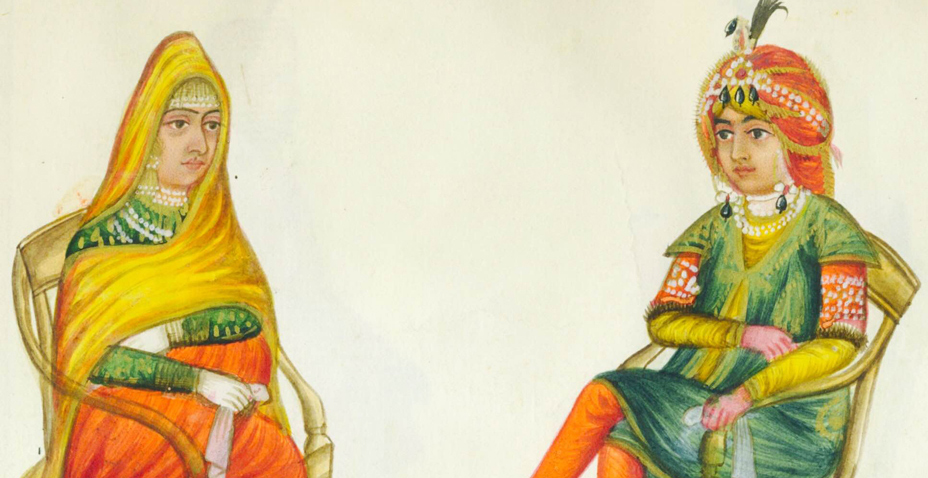By Rupy C. Tut
Through traveling we find ourselves immersed in places with exciting cultures, different types of people and unique ways of living. We collect our travel memories as we pose for selfies, take videos, and write lengthy Facebook posts for our friends to see.
How would we capture these memories if we were visiting Punjab for the very first time in the 19th century? In absence of cameras and the Internet, detailed letters would replace long Facebook posts and sketches or paintings would substitute photos on our cameras. The 19th century European travellers did exactly this when they visited Punjab for the very first time.
Today, as we would find tourists buying a small “charkha” as a Punjabi souvenir, the European tourists bought albums of paintings as souvenirs of their memorable trip. To capture the uniqueness of 1800s Punjab, each souvenir album was filled with painted memories of the powerful Sikh rulers, the impressive royal court, remarkable monuments, soldiers, some common occupations, and much more.
At the beginning of my artist residency at the Sikh Foundation, the first pieces of Sikh art I worked on were three notebook-size “souvenir” painting albums. I had the task to catalogue and research each album while fighting my urge to get caught in the detail and artistry of each painting. With similar albums existing in well-known museums around the world, I went through each album with admiration and awe as if it were an heirloom of an ancestor long gone.
Produced probably around the late 1800s, these painting albums are representative of a very significant part of Sikh art and history. Purchased about twenty years ago at an auction house in London, Dr. Narinder S. Kapany, the founder of Sikh Foundation, reminisces that he purchased these albums “…when no one was looking for Sikh Art and when the category of Sikh Art didn’t even exist at auctions”.
When I open these albums today, I can browse through at least 60 different paintings showing snapshots of Punjab in 1800s. Bound in a beautiful carved leather exterior, each album carries the viewer through a beautiful journey into the past. Every time I opened an album, I embarked on an expedition to make sense of this previous time. What type of chair was the Maharaja seated on? Why is the Maharaja holding a flower in one hand? What was this odd method of water irrigation I was looking at? Why is there a painting of a man wrestling a bear? These questions and many more continue to be the subject of my research.
Akali Singh and Akalin – The Kapany Collection
When asked about the purpose and significance of each painting album, Sonia Dhami, the Sikh Foundation’s Executive director, notes that the three painting albums are “…a peep into a period of history, which was not too long back…and in a way bind the rulers to the ruled.” For example, each album begins with a portrait of the powerful Sikh ruler of the time, Maharaja Ranjit Singh (1780-1839) and most often ends with a painting of a trader or vendor who is part of the working class. It is remarkable to see the ordinary and extraordinary strung together as one album.
After Ranjit Singh’s portrait, the albums progress further to show Ranjit Singh’s family & court dressed and seated for the important roles they played. The royal court is followed by paintings of significant monuments and places of significance such as the Golden Temple in Amritsar, the Shalimar Gardens, and even Ranjit Singh’s Tomb in Lahore.
The Golden Temple in Amritsar – The Kapany Collection
Occupations that we would find very unique today and some that we have never heard of are also given a place in each painting album. Weavers, cotton cleaners, vendors of all sort, jewelry makers, hunters and soldiers are painted with care and detail in their natural workplace surrounded by tools of their trade. The entertainers are a category on their own and added in as dancers, musicians, stuntmen, acrobats, wrestlers, and dare-devils. A few paintings also show some glimpses of figures, such as fakirs, men smoking hookah, and women selling toys, whom we might routinely encounter at a street corner in 1800s Punjab.
Street Sweepers – The Kapany Collection
While most of the figures, monuments, and occupations are familiar and still heard of in modern Punjab, many of the tools and techniques documented in these painting albums are no longer a part of the Punjabi landscape. Irrigation systems like the Persian wheel, cotton cleaning equipment like the “pinjar”, and the bull driven oil press are depicted in the painting albums as common practices of that time. However, it is rare to witness the use of these methods and machinery in Punjab today.
Very important elements in the entire collection of 19th century Sikh Art existing today, the painting albums provide a unique area to research and investigate. Beyond giving us a simple narrative of life in Punjab in the 1800s, the albums hold a significant place in telling the journey of Sikh art. While more still remains to be said about the artistry and making of each painting and each album, it is important to understand their overall purpose and relevance if we are to understand more about Sikh art.

